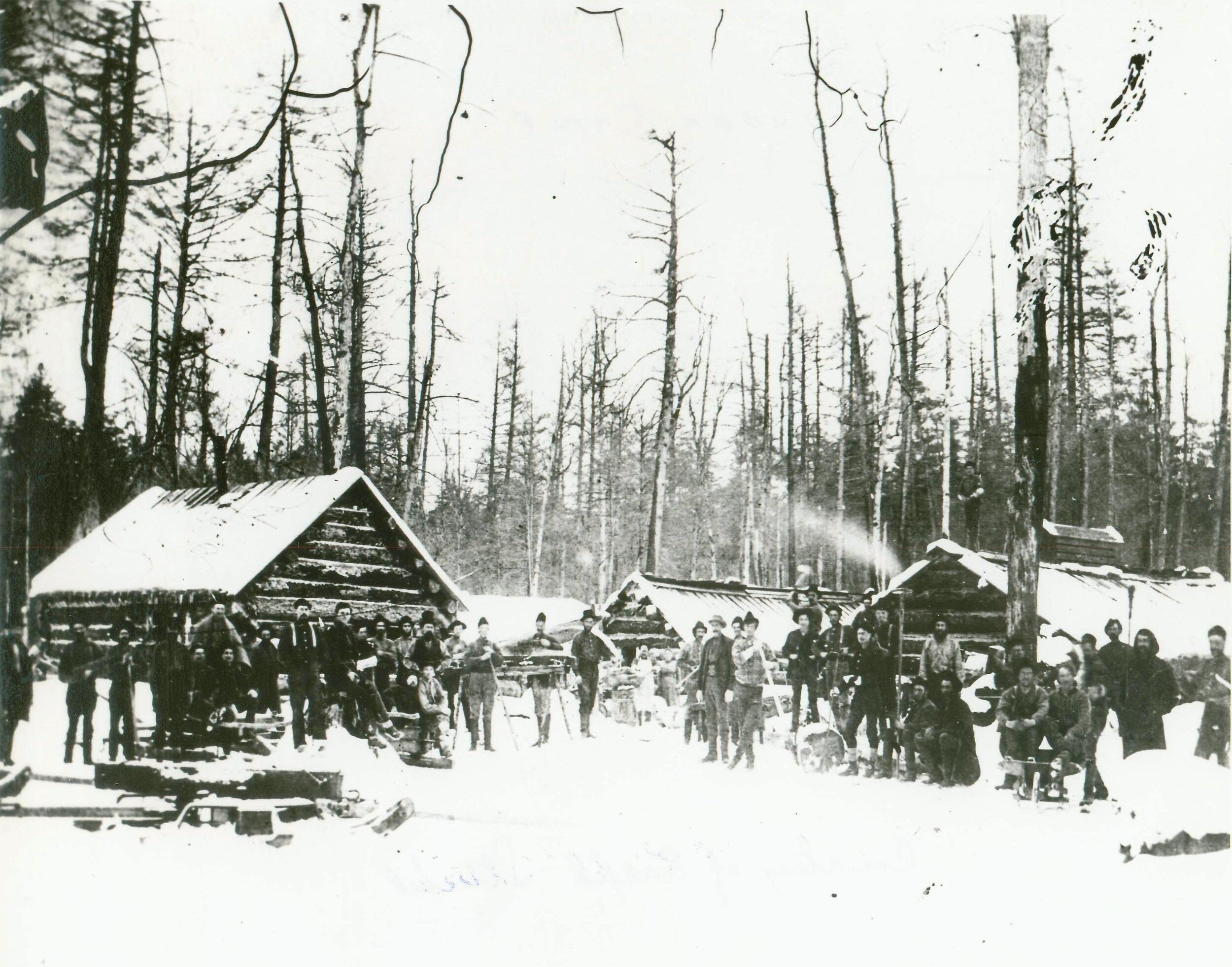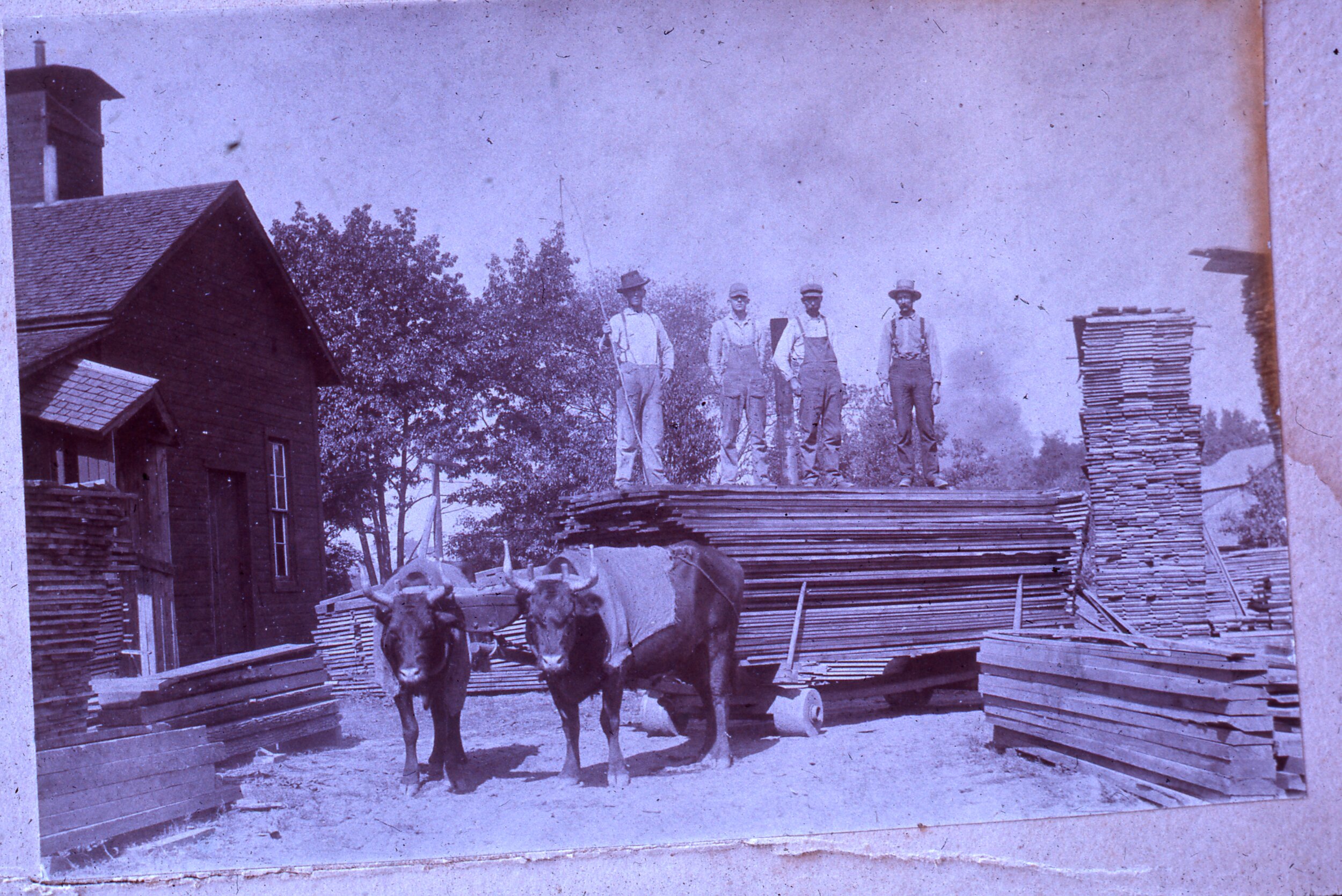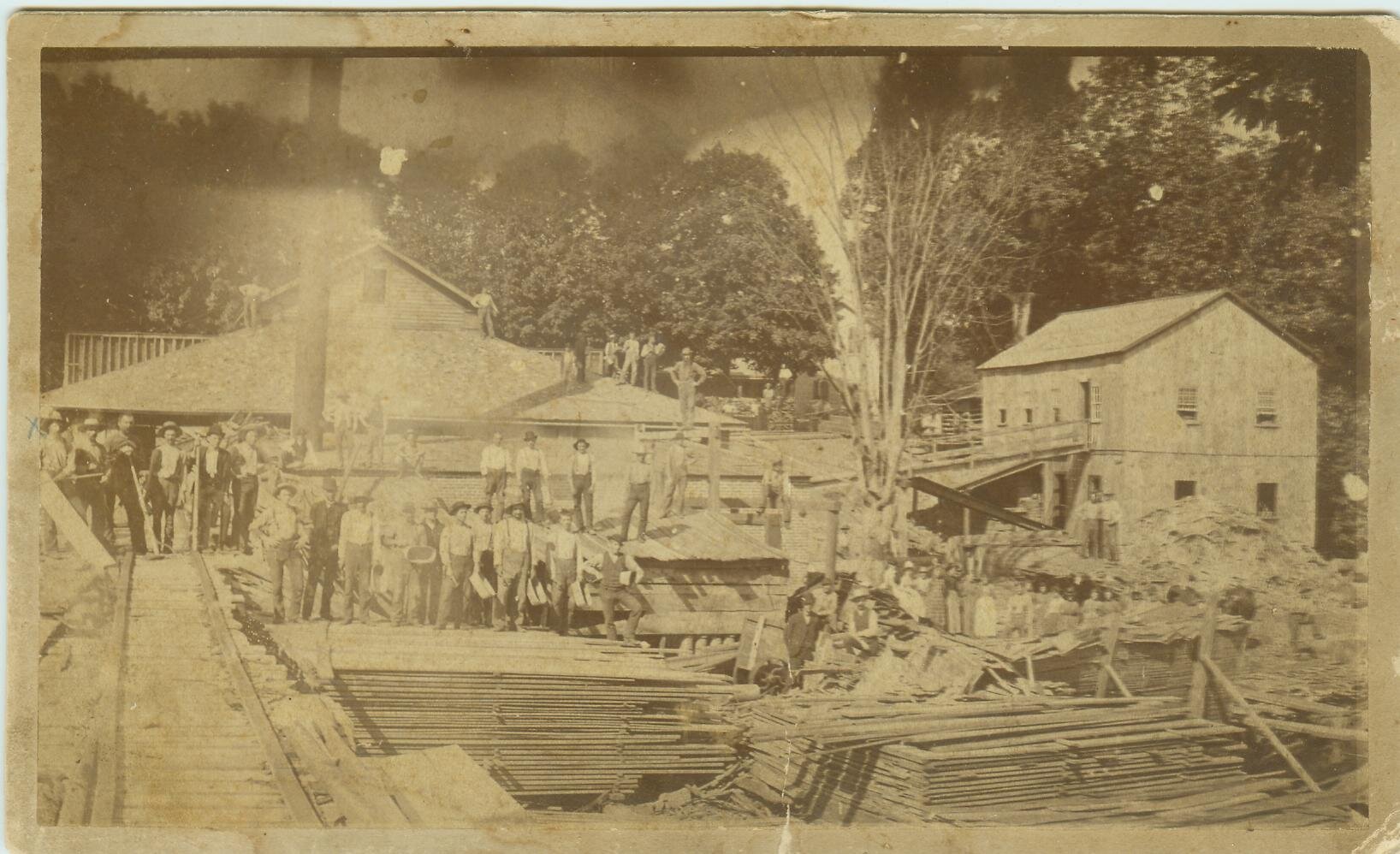



The Lumber Years
“Timber!” was first heard through the woods here in the 1830s, a few decades before the famous pine lumbering era in northern Michigan. At the time of statehood in 1837, Southwest Michigan was covered in varied forests including pine stands, mixed hardwoods, swamps, and dunes, with some clearings. Most southern Michigan sawmills at this time only produced lumber to be used locally, but some of the first lumber products shipped on Lake Michigan came from this area. At “Shingle Diggins” in the mid-1830s, a small colony of settlers produced hand-split shingles and sent them down the Paw Paw River to be shipped to market. Some firms, mostly from New York, purchased vast acreage of timberland and sent in crews to log the forest. By the 1860s, the largest saw mill in Berrien County was at Watervliet and could cut 30,000 board feet of lumber in one day under a water-powered mill wheel. Until about 1890 logging and wood products were major industries throughout Southwest Michigan. Lumbering not only attracted businesses and settlers, it determined the location of some of our modern communities including Millburg, Coloma, and Watervliet.